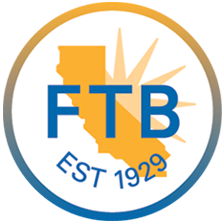Form 2290 - Schedule 1
Employment Tax Forms
Information Returns
Exempt Org. Forms
Extension Forms
FinCEN BOIR
General
If you're a trucker or owner of a heavy vehicle, you're probably familiar with Form 2290 which is used to report and pay the heavy vehicle use tax (HVUT). But did you know that once you've filed your IRS Form 2290 and paid your HVUT, you also need to obtain a stamped Schedule 1 to prove that you've paid the tax?
In this article, we'll learn about the IRS Form 2290 stamped Schedule 1 and provide an overview of its importance.
Table of Contents
What is Form 2290 Schedule 1?
Form 2290 Schedule 1 is proof of payment issued by the IRS that you have paid the heavy vehicle use tax (HVUT).
Schedule 1 is typically valid from July 1st of the current year to June 30th of the following year, corresponding to the tax period for which the HVUT is paid. So, it's necessary to file your HVUT Form 2290 on time and accurately pay your HVUT payment to receive your stamped Schedule 1 before the current period expires.
Once the IRS processes your HVUT Form 2290 and verifies that the required HVUT has been paid, they will stamp and return Schedule 1 to the taxpayer as proof of payment. This stamp indicates that the tax amount has been paid and the vehicle is legally authorized to operate on public highways.
Why is Schedule 1 Important?
Obtaining your watermarked Schedule 1 is a crucial part of your Form 2290 filing, as it serves as proof of payment for the HVUT that you paid with the IRS. It is also required by the Department of Motor Vehicles (DMV) to register new vehicles or renew the registration of existing vehicles.
Simply put, vehicle owners may not be able to legally operate their vehicles on public highways without stamped Schedule 1.
Below are a few more things that show the importance of having a stamped Schedule 1:
Proof of Payment: Schedule 1 acts as a receipt, proving that you have paid the required HVUT. This proof of payment you received from the IRS is valuable as it acts as evidence of your compliance with tax obligations.
Vehicle Registration and Renewal: Schedule 1 is often required during the registration or renewal process with the Department of Motor Vehicles (DMV). DMVs across the country typically request a copy of the stamped Schedule 1 as proof of tax payment before they can issue or renew vehicle registrations.
Truckers also use stamped Schedule 1 to register their vehicles at DMVs. Therefore, this ensures that only vehicles that have met their tax obligations and are legally registered are allowed to operate on public highways.
Interstate Travel Inspections: When operating heavy vehicles on public highways or interstate, you may encounter inspections conducted by law enforcement agencies or state authorities. These inspections aim to ensure compliance with various state regulations, including HVUT payment.
During such inspections, the stamped Schedule 1 is considered a vital document that verifies your compliance with the HVUT, and its absence can result in penalties or travel restrictions.
Compliance with IRS Regulations: Schedule 1 acts as evidence of compliance with state and federal tax requirements. It demonstrates that the necessary taxes have been paid, ensuring adherence to IRS guidelines and avoiding potential penalties.
Schedule 1 is an important document for all heavy vehicle owners and operators who are required to file Form 2290 and pay their HVUT. Obtaining a valid Schedule 1 not only serves as proof of HVUT payment but also makes you compliant with IRS regulations.
By understanding Schedule 1 and its importance, heavy vehicle owners can meet their tax obligations, comply with IRS regulations, and can operate on public highways with peace of mind.
How is Schedule 1 used as Proof for DMV and DOT Renewal?
When owners or operators of heavy vehicles need to renew their Department of Motor Vehicles (DMV) or Department of Transportation (DOT) registrations or permits, a valid Schedule 1 serves as proof of HVUT payment. Many state authorities require this proof to ensure the required HVUT taxes have been paid before granting renewal privileges.
Without a valid Schedule 1, the DMV or DOT may withhold vehicle renewals or registrations until the HVUT tax liability is satisfied.
E-file Form 2290 and get your Stamped Schedule 1
The IRS recommends e-filing Form 2290 over paper filing as the process is faster and you get immediate access to your Schedule 1.
By filing your Form 2290 online using an IRS-authorized e-file provider like TaxZerone, you will receive your stamped Schedule 1 in just a few minutes! With our user-friendly approach and step-by-step filing process, we ensure that your Form 2290 is transmitted to the IRS error-free!




